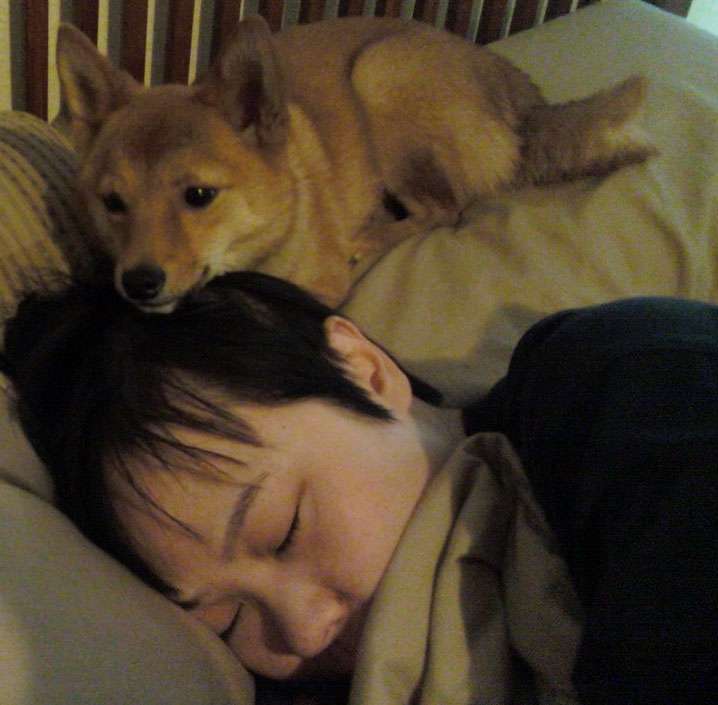Dog lovers and pet owners know too well that the idea of snuggling and cuddling with their beloved doggies are just too irresistible at times. Because of this, many people find even the idea of crate or kennel-training their dogs as something cruel and unfair to their pets. However, when used properly, crates can actually provide more structure and foundation for your dog to learn desirable behaviors.
Crate training is actually considered a great way for dogs to fully take in the right behaviors in a more efficient and less stressful manner. As a matter of fact, this particular method has been used both by professionals and veterinarians alike to help instill these habits.
This approach provides a number of benefits not just to your dog, but to pet owners as well. Learn more about using crates for your pet and just how low your dog can stay in a crate.
What is a Crate?
A dog crate is simply an enclosure made either from plastic, wire, metal, or even fabric that is large and comfortable enough for your dog to stand it. It usually comes with a door to help safely keep the dog or to help transport your pet.
In many ways, a crate is considered a safe and secure place where your fur baby can find solace or retreat in times of need. These kennels or crates are typically used for a shorter amount of time.
Apart from training your dog, crates provide your pet with a safe space they can use for safety and security, for recovery purposes, and can be used as traveling companions.
Importance of Crate Training
There are various reasons to crate train your dog and to use their crate for hours at a time. One of these reasons is that doing so helps them fulfill their needs. In many ways, it provides your dog with a space to protect themselves and give themselves a space where they feel safe. Dogs have a tendency to seek out smaller spaces and create a ‘den,’ especially when dealing with stressful situations, and the use of a crate can help satisfy this need.
Another benefit to using crates for your precious doggie is that these are great tools to get them accustomed to the rules of the house or ‘housebreaking’ them. What’s great about dogs is that they do not like to dirty up where they sleep, so staying in their crate further reinforces this by helping them hold their bladder and bowels while in their safe space.
What’s more, this also helps you protect your home and enforce household safety as well. Not only can you get the peace of mind that you deserve knowing that your things remain in place and that nothing is destroyed, but you can also breathe easy knowing that your dog remains safe even when you are not there to keep an eye on them.
Of course, it also goes without saying that crates will make you and your dog’s life easier when you are on the go. Whether you’re traveling or simply visiting the vet, crates will lend a more seamless way of transporting your dog rather than having them loose in the car or at the vet’s.
What to Consider?
Before anything else, it’s important to remember that a crate is a helpful tool in training your dog to have the right and desirable behaviors. It should never be used as a form of punishment, especially as it can hurt your dog both physically, mentally, and emotionally, and may only further isolate them.
With that in mind, there are some aspects to consider when it comes to placing your dog in a crate for whatever reason. After all, these aspects also determine the length of time they can and should stay in their crate.
Among those considerations are their age and health. While no dog is too young or too old to leave inside their crate, there is certainly an amount of time that you should leave them depending on their age.
Besides this, you may also want to consider the level of comfort your dog has inside their crate. They should have a space they feel comfortable at all times, especially to invite them to use their crate when needed.
Amount of Time Your Dog Can Stay in a Crate
Having talked about the aforementioned factors, it’s time to get into the nitty-gritty of it all. For those who are wondering just how low they can keep their dogs in a crate, you already know that this is largely dependent on their age.
For example, puppies that are just 9 to 10 weeks old or even younger than that may be left in the crate anywhere from 30 to 60 minutes. Meanwhile, puppies 11 to 14 weeks old may be allowed to stay in the crate for an hour to 3 hours.
15- to 16-week-old puppies, on the other hand, may stay in their crates for 3 to 4 hours, while 17-week-old puppies and older can stay in the crate for 4 to 6 hours. On top of these recommended time limits, you may also want to consider placing them an hour in the crate for every month of their age.
Bear in mind that while your beloved dog can be crated for a couple of minutes or hours a day based on their age, this does not necessarily mean that they should be relegated or confined to their crate all the time.
Puppies on the younger side of the spectrum, particularly those that are under 6 months, should not stay for more than the recommended amount of time. They most likely cannot control their bladder or bowels at a young age, and the same should also be observed for older or adult dogs who are just starting to be crate trained.
In order for dogs to thrive and be successfully trained, they still need ample space to stretch, play, and move around. As such, it is best to avoid allowing your dog to stay in the crate for a long time. Doing so can cause stress and anxiety in your puppy, and may bring about behavioral and health problems. This may also isolate them from other people and dogs and may damage their training and progress.
Tips for a Successful Crate Training Session
-
Choose the Right Crate and Size for Your Dog
One of the first things you should consider before crate training your dog is finding a crate big enough for your pet to move around and stand in. They should be able to stretch in this, as well as lie down and turn around comfortably. While these should be big enough for the said activities, the crate should not be so big that your dog can already wander inside.
There are different types of crates around, so be sure to pick one that meets your dog’s needs and yours. Wire crates are easily collapsible and can be brought with you just about anywhere. Plastic crates, on the other hand, can provide more privacy for your dog and recreate a den-like feel.
-
Find a Comfortable Location for Your Dog
As they say, location is everything and this certainly applies when crate training your dog. Dogs are social creatures and they need ample time to socialize not just with other pets and dogs, but also people.
To make it easier for your fur baby, you might want to place their crate or kennel in a central but strategic location, preferably your living area, a family room, or even your bedroom. This way, they can still get the interaction they need and not feel isolated.
Apart from finding the perfect location, another thing that would make your dog feel more at home in their crate would be a crate pad. This adds support and a level of coziness that would make them right at home. Throwing in a small pillow and a cozy blanket, as well as some of their favorite toys, will make your dog’s crate even more inviting.
-
Start Slow and Small
Getting your dog used to your crate won’t happen right away. If it does, you’re one of the lucky ones. To help your puppy get used to their crate, you may want to start gradually and increase their crate time slowly.
Instead of overwhelming your dog right away and pushing them to stay the entire time in their crate, you can start with a few minutes at a time. Lengthening this amount can help them get accustomed to what their crate feels like over time.
-
Consider Giving Treats to Encourage Your Pet
Luring your puppy with some of their favorite treats might just be enough to help them come inside the crate and stay for a while. This will provide them with a sense of comfort and accomplishment as well, especially if they associate treats as a reward for good behavior.
If you want to take it a step further, you may even want to feed your dog their meals inside their crate. This way, they become more familiar with their crate and create a level of pleasantry with it.
The Bottom Line
Having a crate for your dog’s needs can create a safe and happy home for both of you. By learning just how much time your dog can stay in its crate, you now have a better grasp of how to train and improve its behavior over time.








